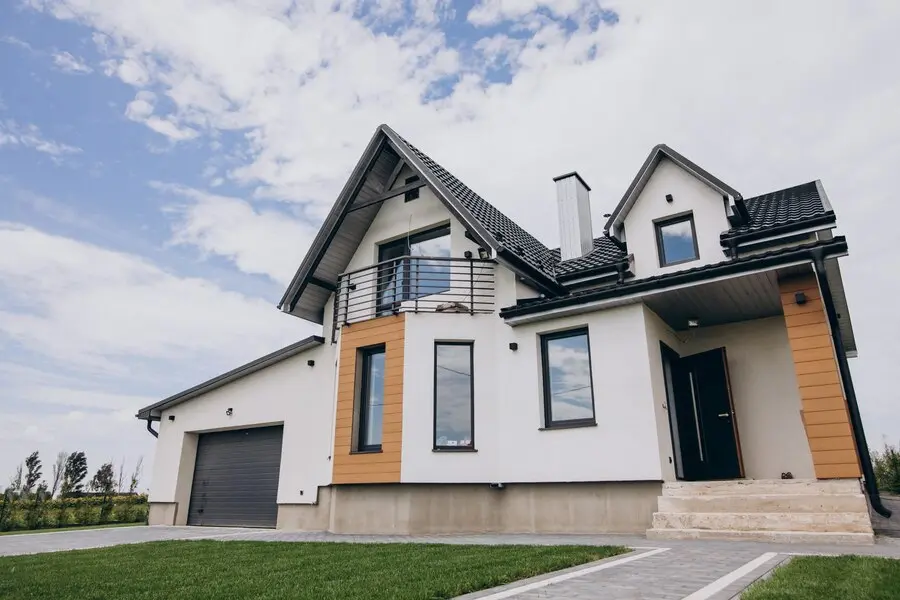Have you ever wondered what are the critical elements that transform a house into a home? When undertaking the intricate process of constructing a new home, understanding the core construction components becomes indispensable. Each stage, ranging from laying the foundation to implementing modern electrical systems, plays a crucial role in ensuring your new residence is both functional and stands the test of time.
In this blog post, we’ll discuss the essential aspects of home building, offering insights and considerations to bring your architectural vision to fruition. Whether you are breaking ground on a custom design or refining modern aesthetics, knowing these fundamental construction phases paves the way for creating an ideal living space. Read on!
Foundation and Framing
The foundation is the bedrock of any construction project, literally and proverbially. It provides the structural integrity necessary to support your home’s load and withstand environmental stresses. Typically, foundations are made of poured concrete or concrete block, chosen based on soil conditions, climate, and design preferences. Proper planning and execution during this phase prevent future issues such as water leakage or settling.
Framing follows the foundation and serves as the skeletal backbone of your home. Wooden or steel frames define the structure’s shape, creating the layout for walls, floors, ceilings, and the roof. Precision during framing is essential to maintaining uniformity and guaranteeing that each subsequent phase of construction can proceed smoothly. It’s vital to collaborate with experienced builders who can interpret architectural blueprints and execute with precision.
Roofing and Insulation
Roofing functions as the primary protection against weather elements. Depending on your geographical location, aesthetic preferences, and budget, various materials such as asphalt shingles, metal, slate, or tiles could be used. Each material has its unique attributes, lifespan, and maintenance needs, so it is important to choose one that aligns with your long-term residence goals. Consulting with roofing contractors in your area, like those from DeWild Construction LLC, can provide valuable insights tailored to your specific needs, ensuring professional installation and helping you select the best option for your long-term residence goals.
In parallel, proper insulation is critical for regulating indoor temperature, enhancing energy efficiency, and dampening sound transmission. Materials like fiberglass, spray foam, and foam board are common choices, each offering different benefits. Adequate insulation guarantees comfort and plays a significant role in reducing energy costs over time.
Plumbing and Electrical Systems
Plumbing and electrical installations are the functional nervous systems of a home, essential for daily living and convenience. The plumbing system encompasses clean water intake, drainage, and sewage removal, which should be designed for efficiency and with high-quality materials to avoid leaks and blockages. Moreover, considerations should be made for future needs and potential expansions.
Similarly, a well-planned electrical system accounts for all current and anticipated power needs, accommodating appliances, lighting, HVAC, and smart home technologies. Safety and compliance with local building codes are non-negotiable to avoid hazards. Skilled electricians must lay out circuits that allow for efficiency, flexibility, and seamless integration of technology.
Interior Finishes
Once the core systems are in place, attention turns to interior finishes, which give your home its personality and style. This stage includes the selection and installation of flooring, cabinetry, countertops, and paint. The choices made here should reflect your aesthetic preferences, lifestyle, and budget.
Quality materials such as hardwood floors, stone countertops, and custom cabinetry not only boost the visual appeal but also add lasting value. When choosing finishes, consider durability, maintenance, and how they complement the overall design vision for your home.
Landscaping and Outdoor Spaces
Finally, the exterior environment of your new home should not be overlooked. Landscaping is integral in achieving curb appeal and providing functional outdoor living spaces. This involves thoughtful planning of elements such as driveways, walkways, patios, gardens, and even water features or pools.
Native plants, efficient irrigation systems, and sustainable practices significantly contribute to creating an eco-friendly and low-maintenance landscape. Outdoor spaces like decks and patios serve as extensions of the home, encouraging outdoor living and entertaining.
Building a new home is genuinely a remarkable journey, filled with anticipation and the thrill of crafting a space uniquely your own. From laying a solid foundation to selecting interior finishes, each phase of construction demands careful consideration and expertise.
While this guide provides you with a comprehensive overview of the essential components involved, working with home construction professionals to build your new home, such as A-Pro-Finish Drywall, is invaluable. Their knowledge and skills ensure that your vision is translated effectively into reality, adhering to quality standards and achieving optimal results. Remember, a collaborative approach not only streamlines the construction process but also ensures that your new home is built to last, offering comfort, efficiency, and beauty for years to come.
If you would like to know more about 5 Key Elements in Home Construction then visit our exterior category.



